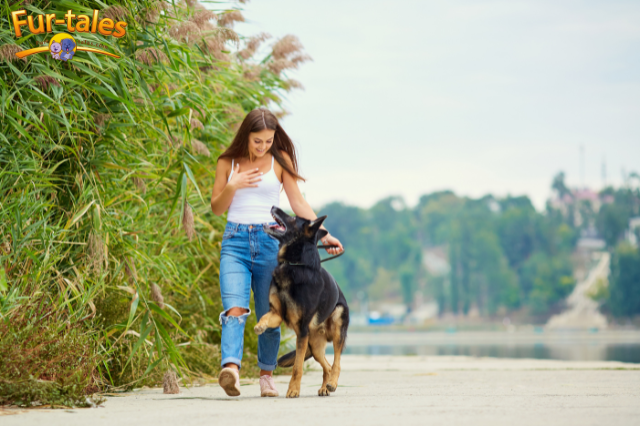
Mind Your Pup’s Manners: A Guide to Dog Park Etiquette
Dog parks are a wonderful place for your pup to burn off energy, socialize, and explore off-leash freedom. They can also be equally enjoyable for dog owners to meet fellow pet parents and watch their furry companions play. However, the key to a positive experience at the dog park lies in one thing: good manners. Dog park etiquette isn’t just about politeness; it’s essential for the safety, comfort, and enjoyment of everyone who shares the space.
Whether you’re a first-time visitor or a regular, this guide to dog park etiquette will help ensure that your trips are smooth, fun, and respectful for both you and your four-legged friend.
Why Dog Park Etiquette Matters
Dog parks are shared environments. Unlike your backyard, these public spaces are filled with unfamiliar dogs and people. Without proper behavior and supervision, things can quickly go from playful to chaotic. Practicing dog park etiquette helps:
- Prevent fights or aggressive behavior
- Reduce stress and anxiety for dogs and owners
- Promote positive socialization experiences
- Keep the park clean and enjoyable for all
Preparing for the Dog Park Visit
1. Know Your Dog
Not all dogs are suitable for the dog park. Before heading out:
- Ensure your dog is friendly and non-aggressive toward other dogs and people
- Avoid the park if your dog is in heat or unvaccinated
- Consider your dog’s personality—shy or fearful dogs may do better in quieter settings
2. Stay Up to Date on Vaccinations and Preventatives
Dog parks can expose pets to parasites, viruses, and bacteria. Make sure your dog is protected:
- Vaccinations: Rabies, DHPP, and Bordetella are typically recommended
- Flea and tick prevention: Apply or administer treatments as prescribed
- Heartworm prevention: Essential if your dog will be spending a lot of time outdoors
3. Bring the Essentials
Pack light, but come prepared:
- Poop bags (always pick up after your dog)
- Fresh water and a portable bowl
- Collar with ID tags
- Leash for arrival and departure
Good Behavior Inside the Dog Park
1. Always Supervise Your Dog
Dog parks are not doggy daycare. Stay attentive and keep your eyes on your pet. Be ready to intervene if:
- Play becomes too rough
- Your dog is overwhelmed or overexcited
- Another dog is being inappropriate or aggressive
2. Pick Up After Your Dog
This one is non-negotiable. Not only is it courteous, but it also prevents the spread of disease. Always clean up after your pup immediately.
3. Follow Size and Age Rules
Many dog parks have designated areas for small and large dogs. Stick to the correct section to avoid intimidation or injury. Puppies under four months should generally avoid dog parks until fully vaccinated and more socialized.
4. Don’t Bring Food or Treats
It may seem harmless, but food can trigger jealousy or resource guarding among dogs. Leave snacks at home to prevent potential conflicts.
5. Use Toys Cautiously
Some dogs love to chase balls and frisbees, but toys can lead to competition or possessiveness. If you bring toys, be prepared to share and remove them if they cause tension.
6. Intervene Appropriately
Learn the difference between play and aggression:
- Healthy play: Loose bodies, wagging tails, play bows, frequent role-switching
- Red flags: Raised hackles, stiff postures, growling, snapping, or pinning
If play escalates, calmly separate the dogs and give them time to cool down.
7. Be Respectful to Others
Dog parks are for everyone. Respect personal space, ask before introducing your dog to someone else’s pet, and never discipline another person’s dog.
Common Dog Park Mistakes to Avoid
- Using the phone too much: Distraction can delay your response if issues arise
- Bringing young children: Dog parks are not safe places for toddlers due to unpredictable behavior
- Staying too long: Overstimulation can lead to behavioral issues; 30 to 60 minutes is often enough
- Ignoring dog body language: Learn to recognize when your dog is stressed, anxious, or overly dominant
Dog Park Alternatives for Sensitive Dogs
Some dogs don’t thrive in busy, unstructured environments. Alternatives include:
- Private dog parks or dog-friendly hiking trails
- Scheduled playdates with known dogs
- Dog sports like agility or nose work
- Structured training classes for socialization
Tips for Making Every Visit a Success
- Go during off-peak hours if your dog is still building confidence
- Use a long lead at first if you’re unsure about your dog’s recall
- Practice recall commands to maintain control
- Rotate your visits to different parks for enrichment and variety
FAQs About Dog Park Etiquette
Q: How old should my puppy be before visiting a dog park?
A: Your puppy should be at least 4 months old, fully vaccinated, and have basic obedience skills.
Q: Can I bring multiple dogs at once?
A: Only if you can supervise them effectively. Managing more than two dogs can become challenging.
Q: What do I do if another dog is aggressive toward mine?
A: Remove your dog calmly and speak to the other owner if appropriate. Report repeated incidents to park authorities.
Q: Should I allow my dog to mount other dogs?
A: No. Mounting can be a sign of dominance or overstimulation and should be discouraged.
Q: Are there breeds that shouldn’t go to dog parks?
A: It depends on the individual dog, not the breed. Assess your dog’s temperament and training rather than stereotypes.
Image Designed In Canva
